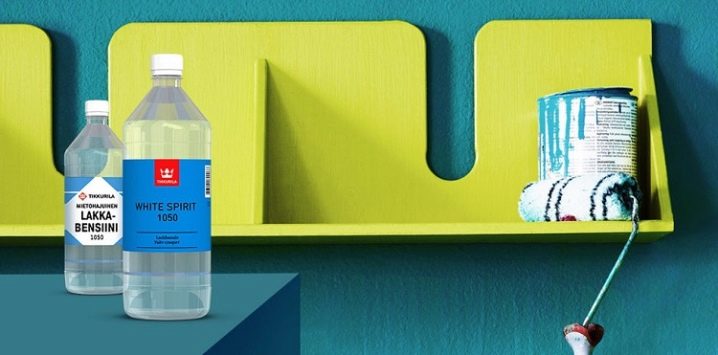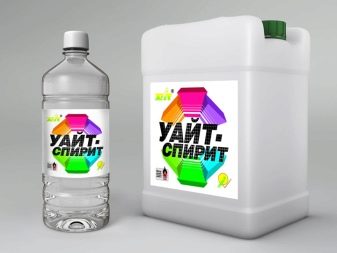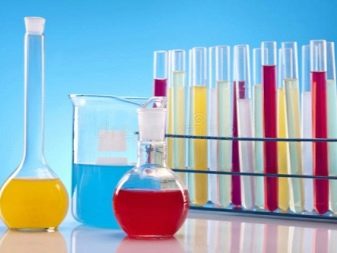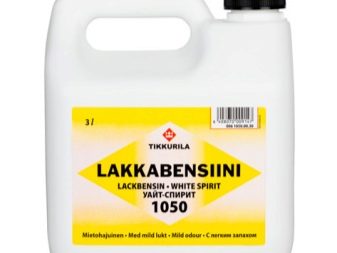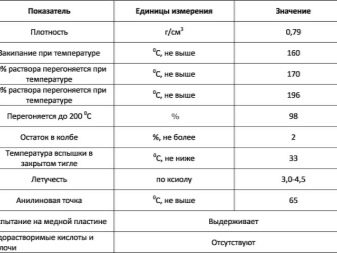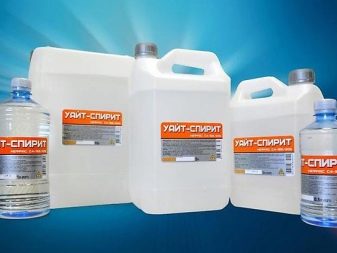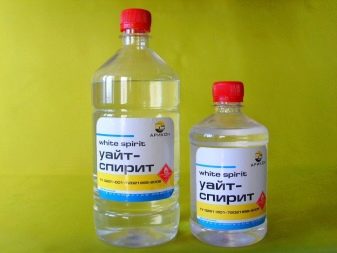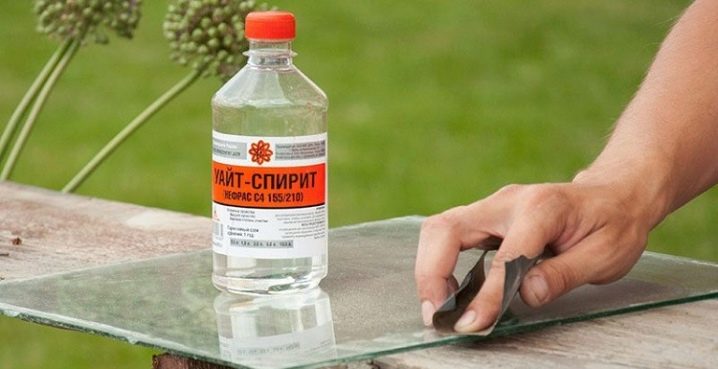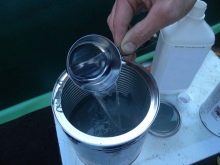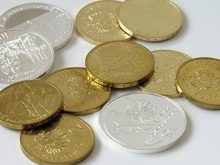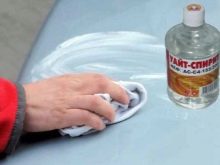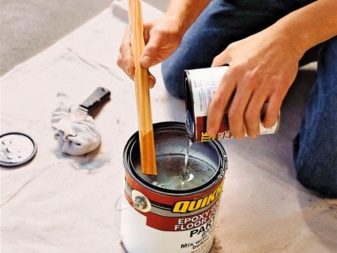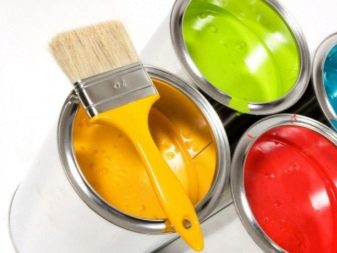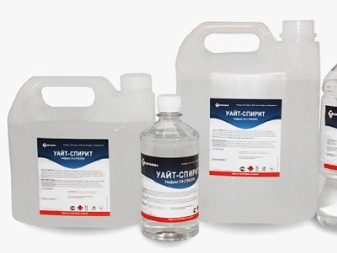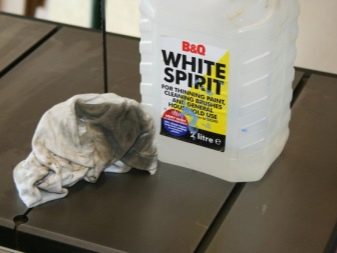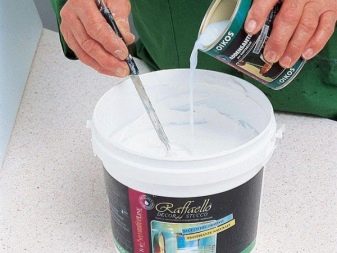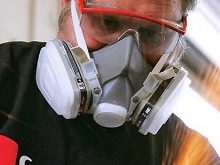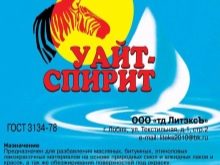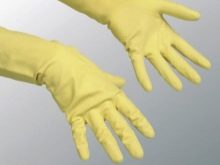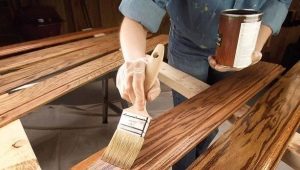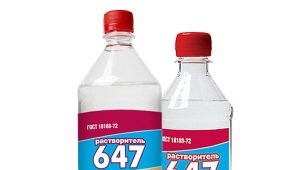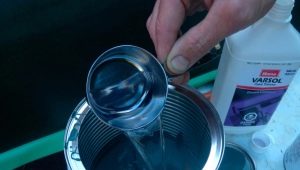White spirit solvent: characteristics and features
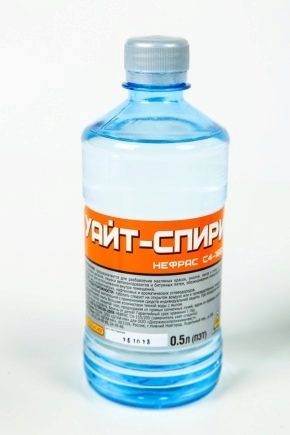
Universal solvent white spirit - the irreplaceable assistant in an extensive spectrum of the works connected with repair and painting of various surfaces. This product, obtained from oil and waste after it is cleaned, is used in everyday life and industry. Preparation of dissimilar surfaces for painting, removal of specific impurities, improvement of the properties of paints and varnishes - all this does not do without the use of this thinner.
Physical and chemical indicators and release form
Heavy petrol-solvent white spirit is a clear, colorless or yellowish liquid with a sharp, specific odor that resembles the smell of kerosene.Today, a number of foreign manufacturers offer a more environmentally friendly and completely odorless solvent through additional cleaning. Between the domestic product and its import analogue, the difference lies in higher rates of speed and efficiency of the first and more environmentally friendly second.
In its chemical composition, white spirit is a mixture of aromatic (up to 16%) hydrocarbons with aliphatic hydrocarbons, which form a gasoline-solvent in its compound. Its English name, White Spirit, this product of the petrochemical industry was due to the high volatility of the vapor and the transparency of the liquid.
The solvent is obtained at the stage of distillation of the diesel fraction of oil, when white spirit is distilled from the bottom product of the column, diesel fuel.
Given the fact that volatile vapors, provided that the room is well ventilated, are quickly eliminated, and in the arsenal of almost every household artisan there are such personal protective equipment as rubber gloves and a respirator; you can sacrifice some comfort for the sake of a better result.The traditional, aromatic-saturated version of the solvent, although it has a strong odor, however, acts better and gives a better result. A weaker smell, which makes it possible to work much more comfortably, has the 1050 brand currently being produced, which is offered by a number of manufacturers.
White spirit is offered to buyers in glass and plastic containers - bottles or more practical canisters for transportation. For small volumes (5 l, 10 l) products are manufactured in durable plastic containers. Solvents are also commercially available in glass containers (up to 1 l) and metal, which is preferable for large volumes required by industrial facilities.
For domestic use, it is most convenient to purchase small bottles of up to 500 ml, since the shelf life of the solvent contained in such a container is approximately three years. For long-term storage (up to 10 years) large volumes can be used durable plastic and metal containers (barrel, tank). The solvent of the series described is not prone to the formation of a precipitate and does not change its chemical characteristics throughout the entire shelf life.
Use of a thinner in life and industry
Widely known to many housemakers and housewives and professional painters, also referred to as nefras (oil thinner), White spirit is used in various industries:
- In everyday life for minor work on the repair of metal, wood, glass products.
- In the paint industry.
- When repairing equipment for wiping parts and removing greasy marks on surfaces to be further processed.
- For the chemical purification of products made from artificial (except for polyvinyl chloride) fibers.
- The kerosene fraction of the solvent is used as the fuel equivalent of kerosene or lighting kerosene. In the latter case, high purity grades are used, since aromatic hydrocarbons form a sooting flame.
- Gasoline-solvent is very popular among collectors of old coins and metal products, perfectly cleaning them from pollution of organic nature.
- To create a variety of means of protection and care for mechanisms and surfaces, for example, varnishes for parquet floors.
Preparation of most metal, wood, glass and rubber surfaces for gluing and painting is completed by cleaning, for which nefras is used. It effectively removes dirt, dust and grease stains.
White spirit is used for dilution of oil-based and alkyd paints, as well as construction varnishes. Excessively thickened oil or alkyd paint is brought to the desired consistency using the same white spirit. The creation of compounds such as anti-rain for car windows, the elimination of paint stains, the removal of protective films from plastic surfaces and traces of adhesive tapes and silicone are also not without this tool. It should be noted that the use of one nephras is not enough for paints of low fat content and low oil formulations.
With the help of solvent gasoline they clean clothes, shoes (even from difficult to remove traces of bitumen) and accessories, machinery parts, painting tools. The tool is an excellent solvent varnishes, rubbers, oil paints and bitumen, as well as mastics, created on their basis. They can also remove stains from oil paints from the skin of the hands, if the painting work was carried out without gloves.Immediately after that, hands should be washed with warm soapy water and smeared with a greasy cream.
Alkyd enamels and other substances with a rather large proportion of oils in their composition respond well to solvent exposure. White spirit is also used as one of the components in the creation of drying oils and more complex solvents. By adding white spirit (up to 10%) to the paintwork material, varnish, putty and primer, you can reduce the consumption of finishing materials. The quality of the coating will remain unchanged, as well as the technical parameters of the obtained protective layer.
The main advantages of the solvent include:
- acceptable cost;
- low levels of toxic components;
- the rapid disappearance of a specific smell;
- a wide range of work carried out with its use.
How to work with the material?
The technology of working with a solvent is not difficult. To clean and degrease surfaces, a cloth, sponge or cloth is slightly wetted in white spirit. To make the paint, varnish, primer or other compounds more liquid, the solvent is added, stirring, into the container with the paint material to obtain an acceptable consistency.Presented in the sale of the solvent does not require any prior preparation, it is used, cast directly from the tank.
Security measures
From a hygienic point of view, white spirit is not safe. This imposes certain restrictions on its use. The previously mentioned solvent was used in copiers as a carrier fluid, making work with this technique harmful. At one time, gasoline-solvent almost completely supplanted turpentine, used earlier in the paint and varnish industry, which served as the main solvent. Replaced turpentine liquid on the level of danger belongs to the 4th class, which is classified as non-hazardous, low-toxic substances.
As a means of protection when working with white spirit, you need to use a respirator (during prolonged work with a thinner or when using it in poorly ventilated or enclosed spaces) and waterproof (rubber) gloves. In case of contact of the liquid with the skin and mucous membranes, such areas should be washed abundantly with clean water.
The high volatility of unhealthy solvent fumes explains the relevant requirements forquality exhaust ventilation systems in areas where it is supposed to use. Production facilities where similar substances are used must be equipped with an efficient local ventilation system. If white spirit is used in domestic conditions, then when working with it, it is necessary to ensure good ventilation of the room or work in the open air. However, this solvent has a low level of toxicity and is one of the most preferred for work in confined spaces.
Prolonged exposure to volatile white spirit fumes on the respiratory tract can have a toxic effect.
To determine the poisoning of the body by the following symptoms:
- dizziness and headache;
- drowsiness;
- irritation of the eyes and mucous membranes;
- itching of the skin, skin rash in allergy prone people, eczema, dermatitis.
When using this solvent, which relates to explosive and flammable substances, it should be ensured that it is sufficiently remote from heat sources in order to avoid accidental ignition. Heat-emitting lighting should also be located at a safe distance.It is strictly forbidden to store and use the tool in the field of welding.
Store the solvent in the temperature range from -40 to +40 degrees Celsius in a place protected from direct sunlight in a tightly closed container. Manipulations with tanks containing white spirit should be carried away from sources of ignition, heat and flame. In the case of ignition of white spirit, sand, foam or carbon dioxide should be used to extinguish the water; in this case water is not used.
In the next video you will find a mini-presentation of Lakkabensiini 1050 white spirit from Tikkurila.
